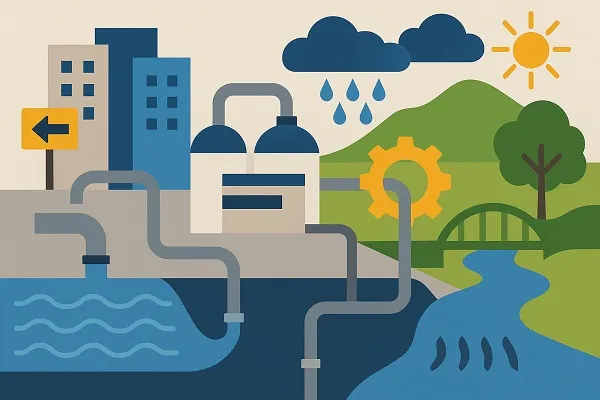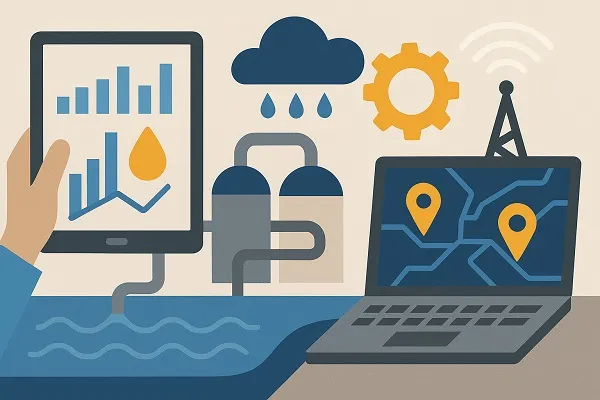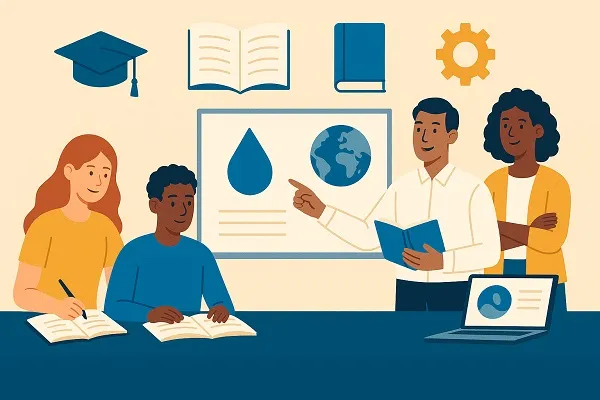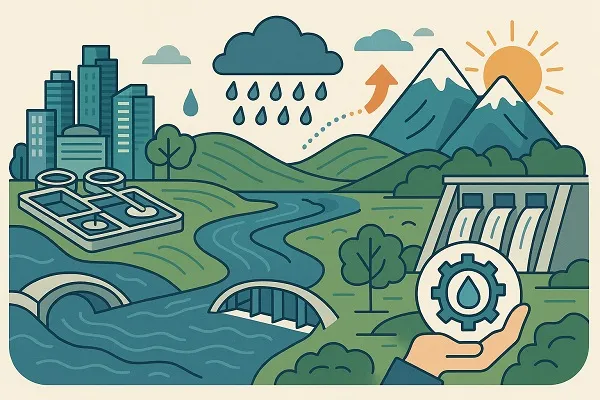Water resource engineering for a changing planet involves the planning, development, and management of water systems in the face of environmental shifts, population growth, and climate change. As hydrologic cycles grow increasingly unpredictable, the discipline must evolve to meet new demands in sustainability, resilience, and technology integration.
This field sits at the intersection of environmental science, civil engineering, and policy planning—focused on securing clean, accessible water for people and ecosystems amid shifting global dynamics.
Understanding the Role of Water Resource Engineering
Core Functions of the Discipline
Water resource engineering is vital for managing how water is stored, distributed, and conserved. Engineers design and maintain structures and systems that support water supply, wastewater treatment, flood control, and irrigation.
Key functions include:
- Watershed management: Monitoring and controlling the flow of water in natural drainage areas.
- Urban water supply design: Ensuring consistent and clean water delivery to growing populations.
- Flood risk mitigation: Developing infrastructure like levees, dams, and retention basins.
- Irrigation system design: Supporting agricultural productivity through controlled water delivery.
Interdisciplinary Integration
Water resource engineers often work with hydrologists, environmental scientists, and policy makers. This collaboration ensures solutions are technically sound, environmentally responsible, and socially equitable.
Climate Change and Its Impact on Water Systems
Altered Hydrological Patterns
Changing rainfall intensity, drought frequency, and rising temperatures significantly impact the quantity and quality of water. Some regions experience more intense precipitation, while others face prolonged dry spells. This leads to:
- Increased flooding and erosion
- Lower groundwater recharge
- Greater competition for limited water resources
Melting Glaciers and Sea-Level Rise
Glacial melt is a major contributor to freshwater availability in regions dependent on snowmelt. As glaciers recede:
- Seasonal flow patterns change, impacting agriculture and hydropower.
- Rising sea levels cause saltwater intrusion into freshwater aquifers.
- Coastal infrastructure must be redesigned for resilience.
Water Quality Challenges
Warmer temperatures and altered flow patterns also affect water quality:
- Nutrient runoff increases harmful algal blooms.
- Lower river flows reduce the dilution of pollutants.
- Stressed ecosystems struggle to maintain balance.
Adapting Infrastructure and Systems

Rethinking Traditional Designs
Conventional infrastructure built under historical climate assumptions is becoming obsolete. Water resource engineers must now incorporate flexibility and adaptive capacity into designs.
Strategies include:
- Green infrastructure: Using natural features like wetlands and bioswales to manage stormwater.
- Modular systems: Scalable water treatment units that adjust to demand or risk levels.
- Floodplain restoration: Allowing rivers to expand naturally during high flows.
Building Resilience into Urban Systems
Cities are especially vulnerable to shifting water realities. Urban engineers are rethinking:
- Stormwater drainage: Incorporating permeable pavements and green roofs.
- Water reuse: Treating greywater for irrigation or industrial use.
- Smart water networks: Using sensors to monitor pressure, leaks, and flow patterns in real time.
Sustainable Water Management Approaches
Integrated Water Resources Management (IWRM)
This holistic approach balances the needs of people, industry, and nature. IWRM emphasizes:
- Coordinated development of land and water resources
- Stakeholder engagement from planning to implementation
- Long-term sustainability over short-term gain
Demand-Side Solutions
Managing consumption is as important as securing supply.
- Water-efficient appliances: Encouraging use of low-flow fixtures in homes and businesses.
- Pricing models: Implementing tiered water rates to promote conservation.
- Public education: Raising awareness on water-saving habits and community stewardship.
Nature-Based Solutions
Natural processes offer cost-effective and sustainable methods for managing water.
Examples include:
- Restoring riparian zones to filter pollutants and prevent erosion
- Creating wetlands to absorb floodwaters and recharge aquifers
- Reforesting watersheds to stabilize rainfall runoff
The Role of Technology in Modern Water Engineering

Advanced Modeling and Forecasting
Climate-resilient water planning depends on accurate forecasts. Engineers now use:
- GIS mapping: For visualizing watershed dynamics and infrastructure vulnerability
- Hydrological models: To simulate water movement under different climate scenarios
- Machine learning: For predictive analytics in water demand and system failures
Remote Sensing and IoT
Satellite imagery and sensors embedded in infrastructure provide real-time data on water levels, quality, and usage.
Benefits include:
- Faster response to droughts or floods
- Precise control of irrigation and supply systems
- Enhanced transparency and accountability
Desalination and Water Recycling
As freshwater becomes scarce, alternative sources grow in importance:
- Membrane filtration: Advanced desalination with lower energy needs
- Indirect potable reuse (IPR): Treating wastewater to drinking standards
- Closed-loop systems: Used in industries to minimize water loss and maximize reuse
Policy, Equity, and Community Involvement
Water Governance and Regulation
Effective management of water resources requires robust legal frameworks and clear institutional responsibilities.
Important policy elements:
- Watershed-based regulation: Managing water by natural boundaries rather than political ones
- Transboundary agreements: Sharing river basins across nations peacefully
- Drought contingency planning: Legal mandates for conservation during crises
Ensuring Water Equity
Equitable access remains a challenge, especially in low-income and marginalized communities.
Key priorities:
- Investing in rural water infrastructure
- Ensuring affordability of water services
- Protecting indigenous and local water rights
Community-Based Solutions
Successful water management often starts at the grassroots level.
- Local stewardship groups monitor water quality and manage small-scale systems
- Participatory design processes allow communities to shape solutions
- Education campaigns foster long-term behavioral change
Education and Capacity Building

As challenges mount, training the next generation of engineers becomes critical.
Needed skills include:
- Systems thinking and cross-sector collaboration
- Data science and computational modeling
- Communication for policy and community engagement
Institutions must also retrain current professionals in climate-resilient practices and modern tools.
Water resource engineering for a changing planet is one of the most critical fields shaping the sustainability of our global water systems. As droughts grow more severe, floods more frequent, and population pressures increase, engineers are not just building infrastructure—they are redefining the way society interacts with water.
The future of water lies in collaboration between science, policy, community, and technology. Through smart design, sustainable planning, and inclusive governance, water resource engineering will continue to play a foundational role in adapting to our changing world.
Content reviewed and published by Tier2Tek Staffing Editorial Team .

